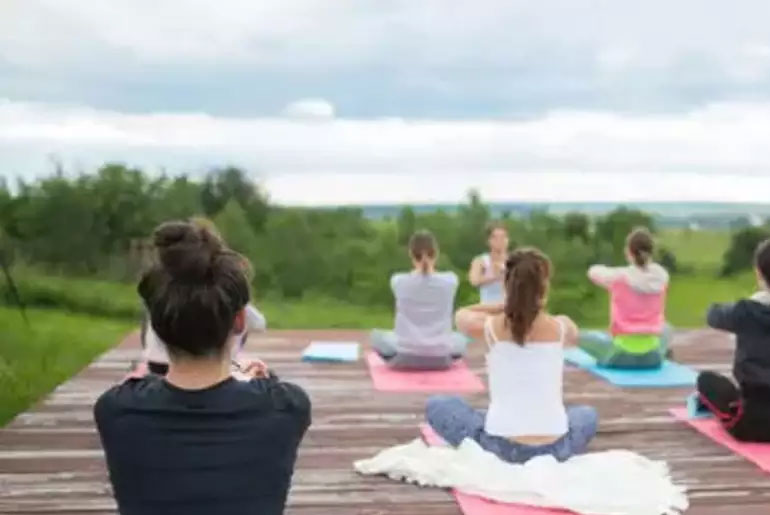The study, conducted by scientists at Stanford Medicine and the University of California, San Francisco, explores the potential benefits of frequent, low-impact exercises such as yoga, stretching, and strengthening for older women suffering from urinary incontinence. This condition, which commonly affects women as they age, can lead to both physical discomfort and social complications, including isolation and an increased risk of falls and fractures due to rushing to the bathroom.
Key Findings:
- Yoga’s Benefits: The study found that a 12-week regimen of low-impact yoga reduced urinary incontinence episodes by approximately 65%. Participants practiced 16 hatha yoga poses designed to strengthen the pelvic floor muscles. This reduction in episodes is comparable to the effects of traditional incontinence medications.
- Stretching and Strengthening Exercises: Women who engaged in general stretching and strengthening exercises also saw significant improvements. While these exercises did not specifically target the pelvic floor, they were nearly as effective as yoga, reducing episodes by around 60%.
Study Structure:
- 121 participants were assigned to yoga classes, while 119 were assigned to a physical conditioning group that focused on nonspecific exercises.
- Participants were women aged 45 to 90, with a mean age of 62, all of whom experienced urinary incontinence at least once a day.
- The study began with in-person classes but shifted to online sessions during the COVID-19 pandemic.
- Yoga participants practiced two 90-minute sessions per week and were encouraged to practice yoga at home for at least one hour weekly.
Yoga’s Role in Incontinence Treatment:
Dr. Leslee Subak, chair of obstetrics and gynecology at Stanford Medicine, highlighted that the type of yoga tested was accessible to nearly anyone and could be modified for different physical abilities. She noted the safety, cost-effectiveness, and ease of access to yoga, especially since many participants practiced it from home during the pandemic.
- Pelvic Floor Muscles: Yoga specifically targeted the pelvic floor, a group of muscles at the base of the pelvis that support bladder and urethra function. Strengthening these muscles through yoga was found to improve bladder control.
- Broader Impact of Incontinence: Subak emphasized that urinary incontinence not only affects physical health but also diminishes independence and social engagement. Many women may avoid social activities or exercise due to fear of leakage, leading to a decline in overall well-being. The condition is also a major risk factor for falls and fractures, especially hip fractures, among older women.
Stretching and Strengthening Exercises:
Participants in the control group, who practiced general stretching and strengthening, also experienced improvements. While these exercises did not engage the pelvic floor muscles, they demonstrated a 60% reduction in incontinence episodes, suggesting that regular physical activity in any form has a positive impact on bladder control.
Comparison with Medications:
The study demonstrated that these low-risk exercises were as effective as medications, which typically improve incontinence symptoms by 30% to 70%. Both yoga and general exercise classes proved to be non-invasive, low-cost alternatives with similar results.
Modifiable Risk Factors:
Dr. Subak highlighted that while some risk factors for incontinence, such as age and childbirth history, cannot be changed, others are modifiable. Weight loss and physical activity, which have shown to be effective treatments, can help manage incontinence.
Practical Recommendations:
- The study suggests that women suffering from incontinence can benefit from trying low-impact yoga or exercise classes in their community or online. Iyengar yoga, which is often recommended for older adults or individuals with physical limitations, may be particularly beneficial.
- Practicing yoga not only helps with incontinence but also promotes overall well-being, including flexibility, strength, and mindfulness, contributing to a healthier lifestyle.
The research underscores the importance of being physically active and exploring non-pharmaceutical treatments for urinary incontinence. Both yoga and general stretching exercises offer effective, low-risk solutions that improve quality of life for women as they age. Subak’s key takeaway from the study is to encourage activity, as these exercises are beneficial for bladder control and overall health.
Disclaimer:
The information contained in this article is for educational and informational purposes only and is not intended as a health advice. We would ask you to consult a qualified professional or medical expert to gain additional knowledge before you choose to consume any product or perform any exercise.








